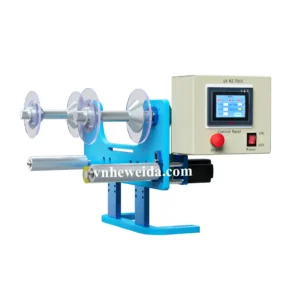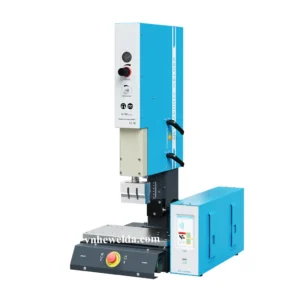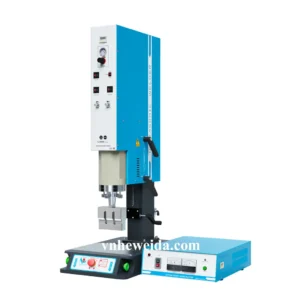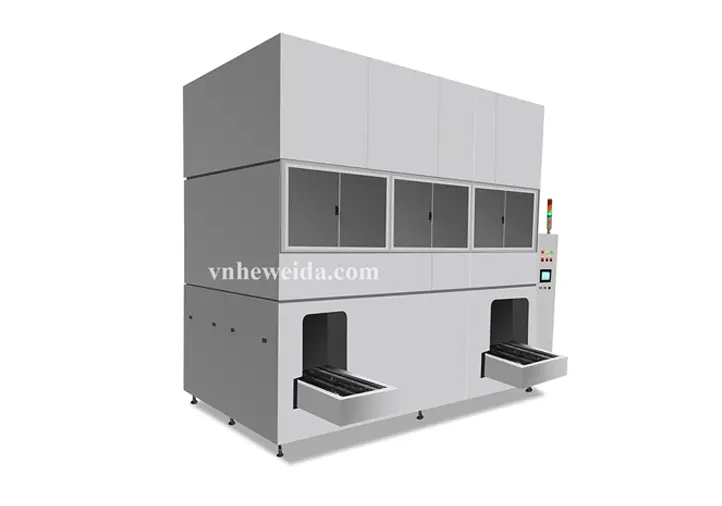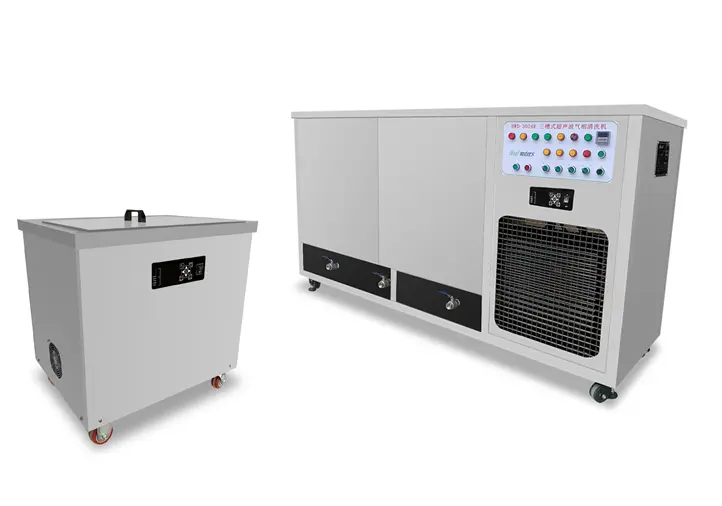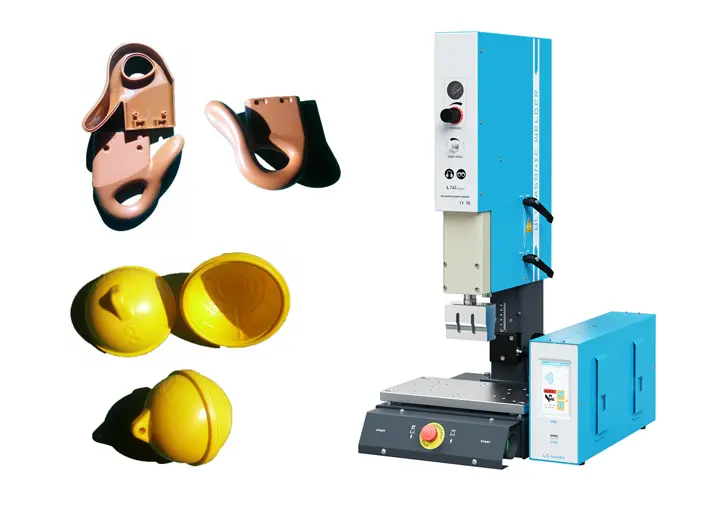Metal bipolar plates are emptied, stamped, welded, cleaned with ultrasonic waves, air-dried, and then hung on racks.
The metal plate cleaning process involves ultrasonic alkaline cleaning, ion-exchange water rinsing, ultrasonic cleaning, ion-exchange water rinsing, ultrasonic cleaning, and alcohol solution cleaning. Ultrasonic cleaning is followed by air drying.
This article primarily introduces magnetron sputtering equipment for metal bipolar plates. Before plating, metal bipolar plates need to undergo a process of emptying, stamping, welding, ultrasonic cleaning, air drying, etc. Afterward, they are hung on racks and await the coating equipment.
Magnetron sputtering equipment for metal bipolar plates is typically divided into chambers: a furnace chamber, a pre-processing chamber, a first sputtering chamber, a second sputtering chamber, a post-processing chamber, and an exhaust chamber.
For an understanding of the principles of magnetron sputtering technology, please refer to “Fuel Cell Stack Bipolar Plates (5).”
Metal bipolar plates are emptied, labeled, welded, cleaned with ultrasonic waves, air-dried, and then hung on racks.
The metal plate cleaning process involves ultrasonic alkaline cleaning, ion-exchange water rinsing, ultrasonic cleaning, ion-exchange water rinsing, ultrasonic cleaning, and alcohol solution cleaning. Ultrasonic cleaning is followed by air drying.
- Magnetron Sputtering Equipment for Metal Bipolar Plates
It is typically divided into chambers: a furnace chamber, a pre-processing chamber, a first sputtering chamber, a second sputtering chamber, a post-processing chamber, and an exhaust chamber.
Multi-Chamber Composite Coating Equipment Diagram
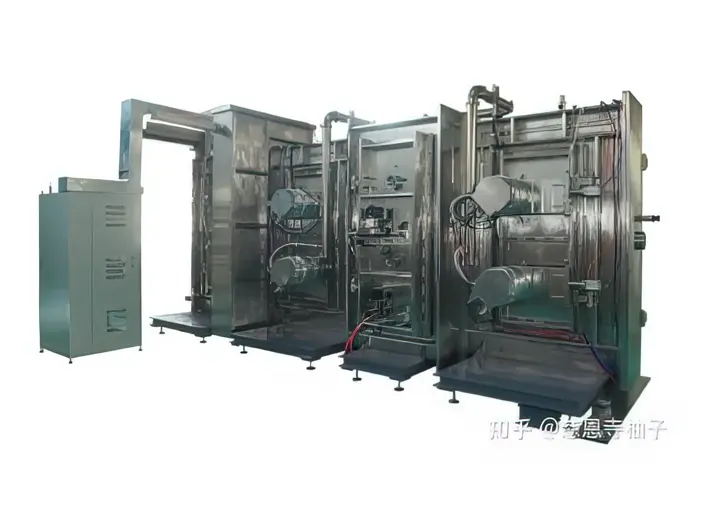
Equipment Diagram
- Description of 6-Chamber Metal Bipolar Plate Sputtering Equipment
(1) Gas Entry Chamber
Push the rack of metal bipolar plates hanging in the loading chamber into the chamber. There are two gas outlets with different diameters at the bottom of the loading chamber. When releasing gas, first draw air from the small hole to 3-7 kPa, and then use the large hole to pump to the preset vacuum level of 1-10 Pa.
To prevent air turbulence from affecting the surface quality of the bipolar plates during dust removal, it is necessary to control the pumping speed. Therefore, two pumping ports with different diameters are designed. This design is because the large suction port is prone to air turbulence and turbulence in the airflow. If a large suction port is used for primary separation, the particles in the air will be lifted by suction force. The airflow will flow quickly and contaminate the metal plates hanging on the turntable.
(2) Pre-Processing Chamber (Transfer Chamber)
The pre-processing chamber is equipped with radiant heat radiation equipment to adjust the temperature of the bipolar plates to the appropriate temperature before membrane deposition. This helps improve the quality of the membrane and microstructure of the membrane, while also drying the remaining liquid in the cleaning stage. An ion source device is installed to bombard the surface of the metal bipolar plates for pretreatment. It can clean fine particles in the air attached to the surface of the bipolar plates. It also enhances the surface energy of the bipolar plates, which is beneficial for the subsequent membrane deposition. The ion source power supply is 700-1800 V, the plasma cleaning mode is turned on for 15 minutes, heated to 60-200°C, and the vacuum degree is 8 ~ 40 * e-5 Pa.
Open the wall door between the loading chamber and the pre-processing chamber, and the bipolar plates enter the pre-processing chamber with the rack. Then, the pre-processing chamber is separated from the loading chamber, and the pre-processing is carried out.
(3) First Sputtering Chamber
It is used to deposit the first layer of elements below the conductive corrosion-resistant layer on the metal bipolar plates. There are 1-2 pairs of cathode targets, and the cathode targets need to have good bonding performance and corrosion resistance with the substrate (such as 304SS for bipolar plates). For example, elements like titanium and chromium can be used.
In the first sputtering chamber, the vacuum degree is 1 ~ 3 * e-5 Pa, the cathode targets are activated, the current is 0.5-10 A, and the bipolar plates perform reciprocating motion “forward-backward-forward-backward” using brackets.
(4) Second Sputtering Chamber
It deposits the conductive corrosion-resistant layer on the metal bipolar plates.
The second sputtering chamber uses 2 to 4 molecular pumps to increase the vacuum and uses 1 to 2 ion sources to bombard the deposited membrane to change the membrane’s stress. The ion source in the second sputtering chamber is arranged adjacent to the target, with a target distance of 200-1000 mm and a palladium substrate distance of 60-160 mm. In the second sputtering chamber, the vacuum degree is 1 ~ 3 * e-5 Pa, and the ion source and cathode targets are activated. The ion source voltage is 800-1800 V, and the bipolar plates perform reciprocating motion “forward-backward-forward-backward” with brackets. During the coating process, the bipolar plates hanging on the rack can rotate.
Different sputtering methods can be used for multiple targets. For example, in the first cathode target pair, unbalanced field magnetron targets are used. The first rectangular planar magnetron targets are used, and then the second cathode target pair uses balanced field magnetron targets. Rectangular planar magnetron targets are used. The third cathode target pair uses closed unbalanced field magnetron targets. In this configuration, both balanced and unbalanced magnetron targets are used to create a system of alternating hard-soft-hard coatings, which helps prevent damage to the conductive corrosion-resistant layer due to excessive stress and avoids the collapse of columnar crystal formation. into dense crystals.
Insert the indefinite shape carbon coating layer into the second sputtering chamber, specifically, the first cathode target current is 3A, argon gas flow rate is 15 sccm, the second cathode target current is 5A, argon gas flow rate is 20 sccm, and the third cathode target provides energy. The current is 3 A, and the argon gas flow rate is 15 sccm.
(5) Post-Processing Chamber
The post-processing chamber has two functions. One is heat treatment to improve the stress distribution inside the membrane. The other is physical repair of micro-hole defects.
(6) The vacuum of the furnace chamber is 3-9 kPa, and 2-3 mechanical pumps and 1-3 Roots pumps can be equipped.
[Note: The provided text appears to be a detailed description of equipment and processes related to metal bipolar plates and sputtering. If you need specific details or further explanations about certain aspects, please feel free to ask.]

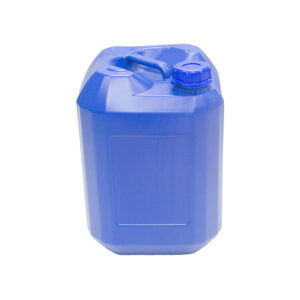
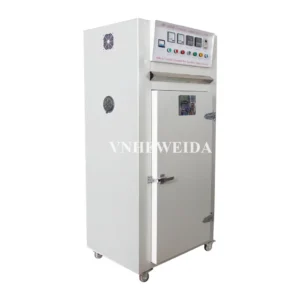
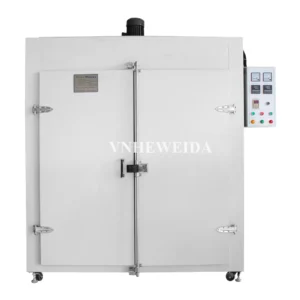

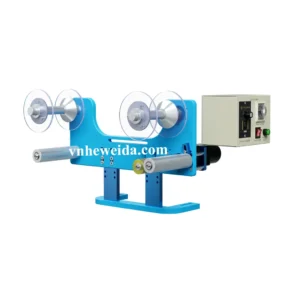
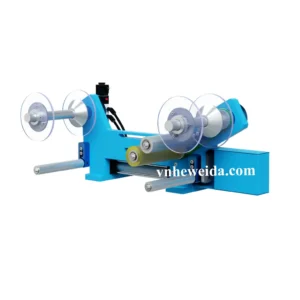
-300x300.webp)
